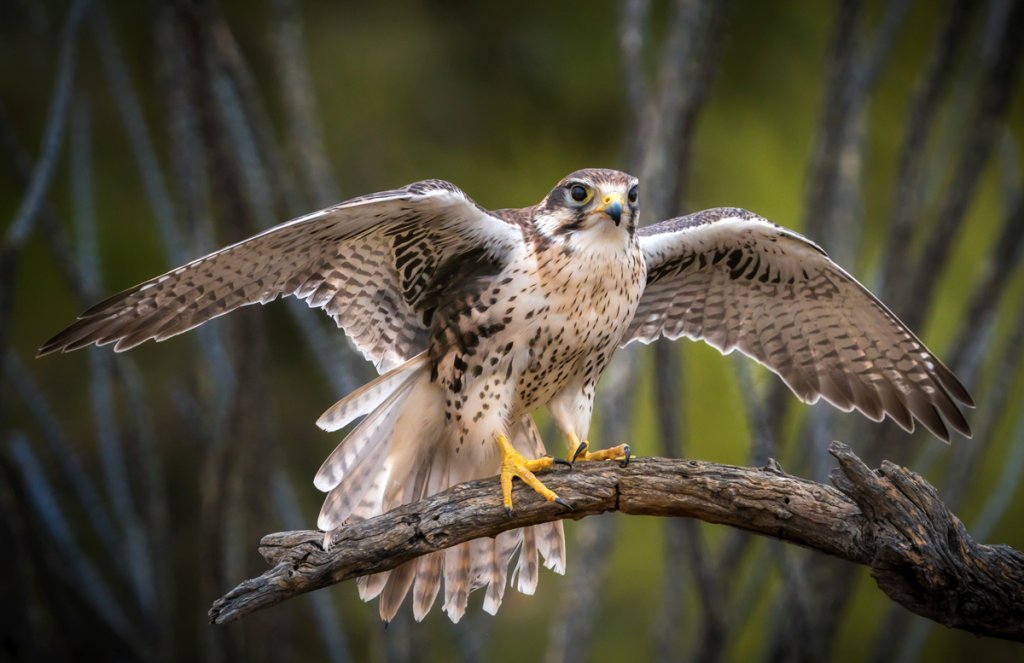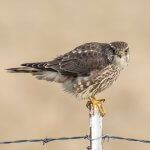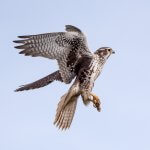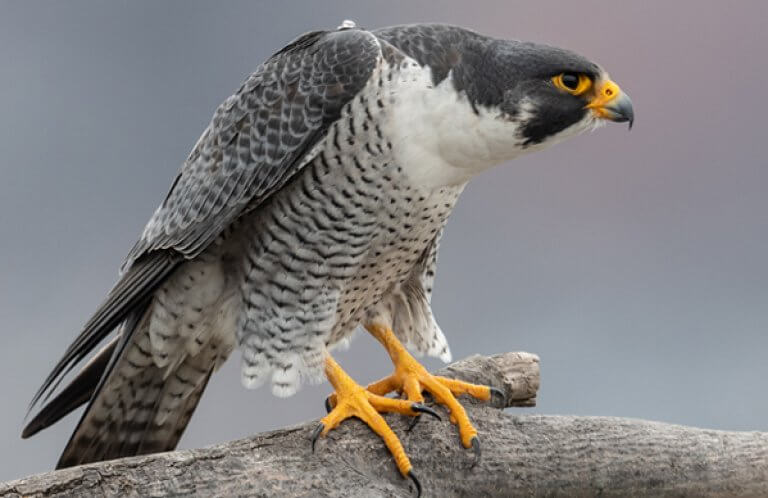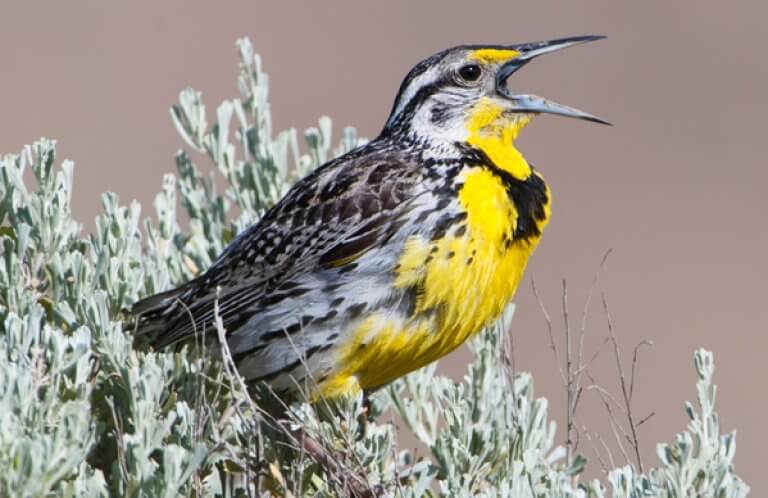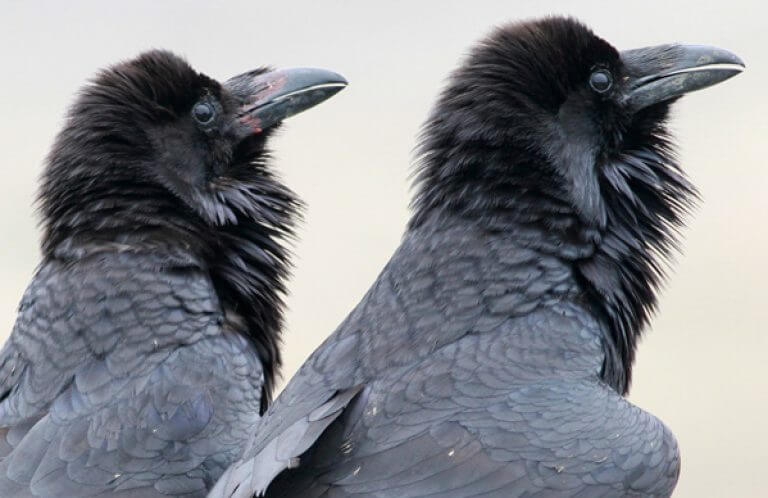About the Prairie Falcon
The Prairie Falcon hunts unsuspecting prey via low-level flights and angular stoops conducted in expansive arid and semi-arid landscapes. The "sandy" cousin of the Peregrine Falcon, the Prairie sports a light brown back and paler tail than the Peregrine, coloration that helps it blend with surrounding rocks, sand, and dry grasses and shrubs. The undersides of the Prairie Falcon's wings are also pale, with each accented with a broad stripe of dark feathers running between the wing's leading edge and its flight feathers. Combined with black “arm pits,” these are key field marks in overflying birds.
In many areas, the Prairie Falcon's staple prey is ground squirrels, although this raptor also hunts birds, including Horned Larks and Western Meadowlarks. In some desert regions, lizards provide a substantial part of the diet, while high in the Colorado Rockies, Brown-capped Rosy-Finches and the rabbit-like American Pika are important prey.
Putting the Best (Cliff) Face Forward
Prairie Falcons breed in deserts, various grasslands, and even in alpine tundra up to 12,000 feet. Wherever they find adequate prey and breed, these birds seek out the same key element: nest sites situated well above the surrounding countryside. Most often, Prairie Falcons nest on cliffs, but they also use other elevated sites, including rocky outcrops, mine or quarry walls, buildings, and trees. Such "high-rise" sites are prime real estate often simultaneously occupied by nesting falcons, Golden Eagles, Red-tailed Hawks, and Common Ravens.
Songs and Sounds
Pairs emit scream-like calls and also communicate through sequenced chips or squeaks, sometimes duetting. Disturbed birds utter harsher scream calls.
Listen here to courtship calls and a "chip duet":
Breeding and Feeding
Well-placed Scrapes
Prairie Falcon pairs are often very vocal, courting by calling and flying together near nest sites. Males also undertake solo display flights, and perform ritualized walks along nest ledges.
Prairie Falcons often place their nests in sheltered locations, including in cavities or locations with an overhanging ledge, both natural and those made by humans. When it comes to doing their own "construction," though, these falcons only make a scrape where they lay their eggs. Sometimes, a pair chooses an old raven or hawk nest, in which case the female lays the eggs in a "real" nest, albeit the remnants of one made by other birds.
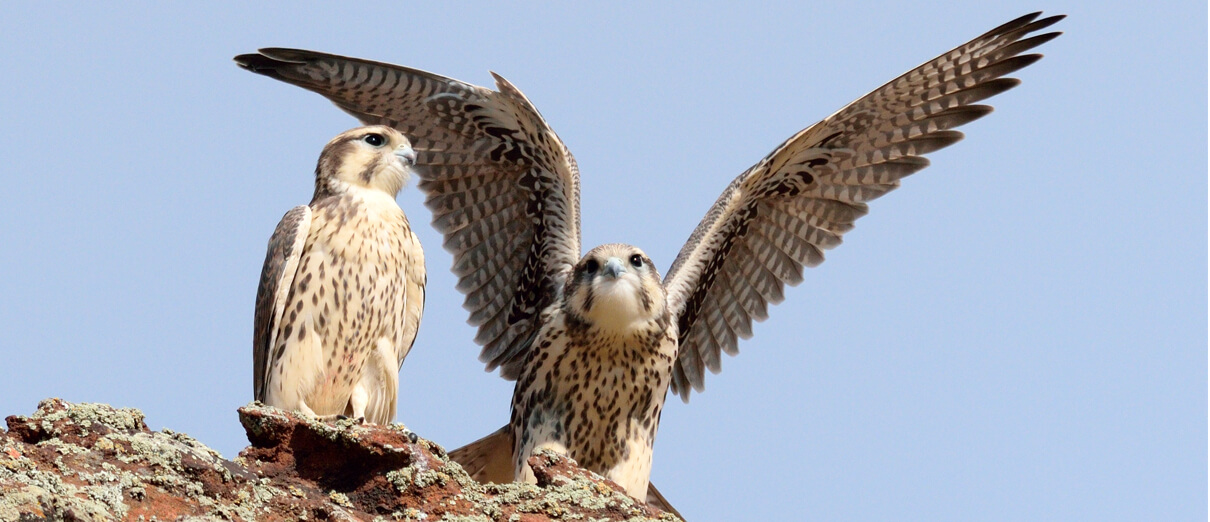
The female lays three to five eggs, which she mostly incubates for a month, while the male delivers food for her. Once the eggs hatch, the female stays with the nestlings for another month, while the male delivers her food, which she shares with the young. Then, for an additional week or two, the young stay in the nest themselves while both parents hunt.
Prairie Falcons pursue their prey in a variety of ways, dropping down from stationary perches, stooping from heights, chasing, and ambushing in low, straight-line flights. In some breeding areas, populations may cycle up and down depending upon abundance of ground squirrels, key prey that is available and critically important during nesting. Open-country birds and reptiles become more important in seasons when mammalian prey is scarce, although in some areas, birds make up the majority of the diet year-round. Prairie Falcons target other prey as well, including insects, reptiles, Cliff Swallows, Mourning Doves and Rock Pigeons, and shorebirds. They often cache some of their catches, storing food for later consumption.
Region and Range

The Prairie Falcon nests from southwestern Canada through much of the U.S. West and in northern Mexico. In winter, the species is also found further east, across the prairie states to the middle of the U.S. Then, small numbers can be expected to show up across much of the Dakotas, Nebraska, Kansas, and Oklahoma, and in Texas to the center of the state. In winter, the Prairie Falcon also ranges further south to central Mexico. Outside breeding season, Prairie Falcons turn up regularly in farm country, at the edges of urban areas, and around reservoirs and other water bodies.
Conservation
Determining the status of the Prairie Falcon is challenging. This species typically occurs in small numbers across vast landscapes. While these birds face many challenges, their overall population is thought to have increased. The status of the Mexican breeding population is unclear.
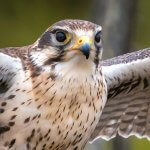
Help support ABC's conservation mission!
Illegal shooting and collisions with fences are common causes of mortality. In many areas, Prairie Falcons depend upon thriving ground squirrel populations for successful breeding. Large-scale projects occurring in falcon breeding areas that cause habitat loss and that reduce the rodents' populations greatly impact these birds. These include industrial-scale farming, mining operations, and housing subdivisions. In many areas, Prairie Falcon breeding cliffs are protected, and these birds can tolerate various land uses, including grazing (though not over-grazing, which reduces prey), small farms, and even military training exercises (though not all), as well as low-density oil and gas operations. This is certainly a species that deserves careful consideration and study before plans are made to open lands to various activities, including recreation, since busy roadways can impact nesting.
Get Involved
Policies enacted by the U.S. Congress and federal agencies, such as the U.S. Fish and Wildlife Service, have a huge impact on migratory birds. You can help shape these rules for the better by telling lawmakers to prioritize birds, bird habitat, and bird-friendly measures. To get started, visit ABC's Action Center.
Living a bird-friendly life can have an immediate impact on migratory birds in the United States. Doing so can be as easy as adding native plants to your garden, avoiding pesticides, and keeping cats indoors. To learn more, visit our Bird-Friendly Life page.
American Bird Conservancy and our Migratory Bird Joint Venture partners have improved conservation management on more than 8.5 million acres of U.S. bird habitat — an area larger than the state of Maryland — over the last ten years. That's not all: With the help of international partners, we've established a network of more than 100 areas of priority bird habitat across the Americas, helping to ensure that birds' needs are met during all stages of their lifecycles. These are monumental undertakings, requiring the support of many, and you can help by making a gift today.





































